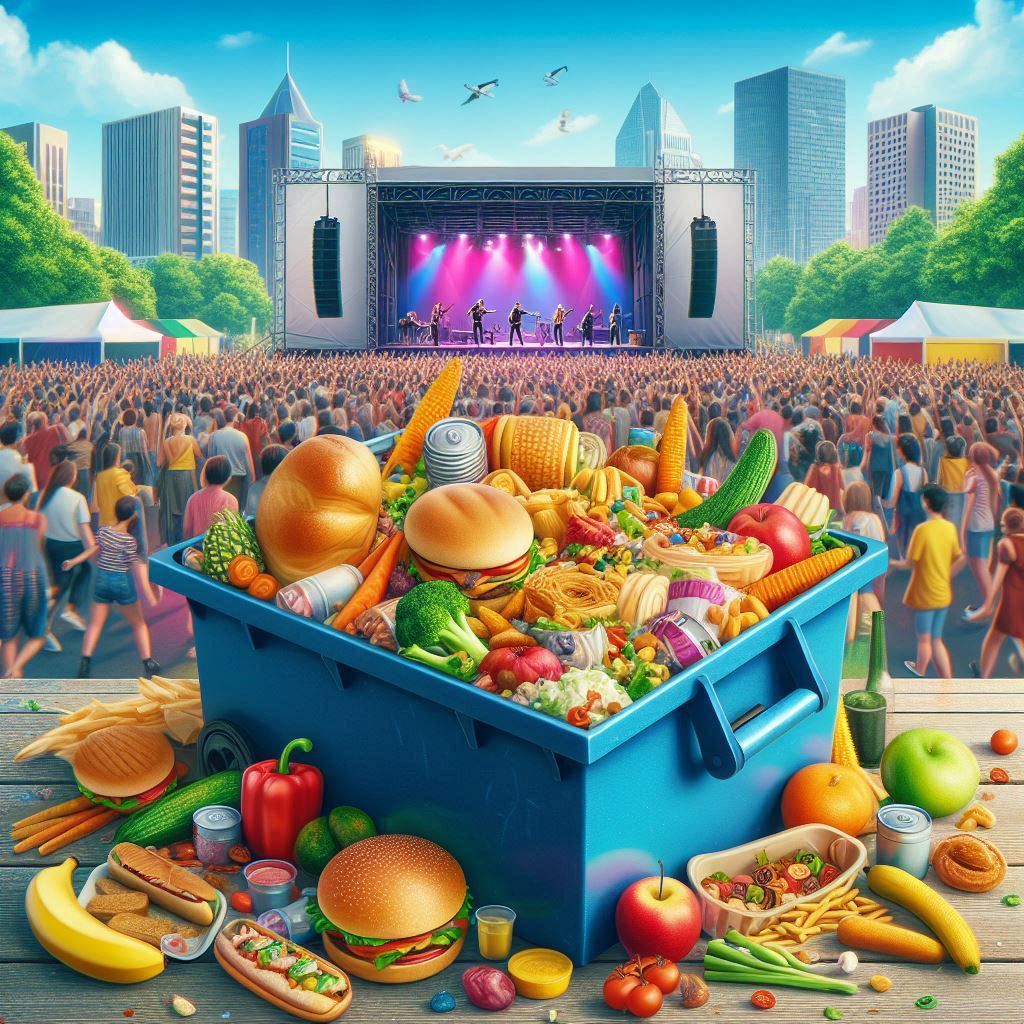Whether they are organizing or hosting a sporting, musical, cultural, or charity event in their area, local authorities are increasingly avoiding waste and food waste. An average event of 5,000 people generates 2.5 tons of waste, according to the EPA (Environmental Protection Agency).
1. Understand the Context
The waste producer (often the organizer) is responsible. In fact, the venue manager is jointly responsible. It’s a good idea to sign an agreement with the organizer, including aspects related to waste management. Some local authorities are promoting a zero-waste charter, like Santa Ana. The organizer must follow the collection regulations of the event venue, and the manager must implement sorting. Regarding biowaste, large producers (> 5 tons/year since 2023) are required to implement source sorting, with on-site recycling or separate collection using dumpsters.
2. Avoid packaging and over-packaging
The Environmental Code prohibits the provision of single-use plastic products (cups, glasses, plates, straws, etc.). Beyond that, an event will prefer bulk packaging, large containers, kegs, and reusable fountains, which are returnable and cleaned regularly during the event, thus saving on purchases.
Negotiations will be made with suppliers to ensure deliveries without unnecessary packaging (returning packaging, large packages, etc.). Until recently, marathon and trail runners were supplied with water using plastic water bottles. To avoid waste, collection, and costly treatment of these bottles, it is essential to provide tap water: water bars run by volunteers and self-service fountains, connected to or supplied with running water. Distribution is done in reusable cups, collected from collection points downstream.
3. Offer reusable tableware
To comply with regulations, biodegradable or reusable tableware will be offered. Be careful! Paper or cardboard often contains plastic. To be more virtuous, some communities or associations rent tableware.
A deposit will encourage participants to return the items at the end of the event. Washing can be outsourced to a service provider. Some waste treatment centers have launched a plastic cup rental service through a service provider, with 170 requests and 1,500 cups borrowed per event in 2022 and 2023. In addition, it subsidizes the rental of traditional tableware, 30% if the rental company is private, 50% if it is a recycling center. Fifty requests were received in 2023.
Some events have built up a stock of tableware through their own recycling center, which they make available free of charge to associations, town halls, and individuals in the area. In Santa Ana, an event dedicated to tall ships, piloted a deposit service for takeaway restaurants: in 2023, the partner company washed and returned 3,000 deposits. For other events, participants bring their own dishes.
4. Fight food waste
Anticipating and planning quantities as accurately as possible will prevent food waste downstream. During the event, to avoid throwing away what hasn’t been consumed, a break in the cold chain for all merchandise will be avoided.
Different portion sizes will be adapted to each person’s appetite, and doggy bags will be offered to take away leftovers. Some companies redistribute surplus food at the end of the event. A Soup Disco will also be offered, a festive group cooking session using unsold fruits and vegetables. For unavoidable biowaste (peelings, leftovers, etc.), the community can arrange, if necessary through a service provider or an association, for collection in voluntary drop-off containers.
For example, at a festival in califronia, volunteers raise awareness among cooks, participants, and restaurateurs, then collect biowaste, including waste from dry toilets, with a service provider turning it into compost (500 liters/year).
5. Find alternatives to new items for decoration
Carpet, stage props, table decorations, plants, marquees, tablecloths, etc. can be rented, borrowed, shared, purchased second-hand at recycling centers, recovered for free, or made from recycled objects or materials. Note the eco-designed scenographies offered by a social enterprise, through designers or architects. Others direct event organizers toward recycled event materials.
6. Limit free distribution of items
Some items will be made available, but not systematically distributed: pens, notepads, USB drives, maps, etc. The ecotrail organizers will no longer distribute medals or T-shirts, but baskets of local products or concert tickets. Rather than more or less useful gifts (pens, notebooks, goodies, etc.), partners will be asked to offer entertainment, provide food, or provide digital gifts in place of goodies.
7. Prevent waste and raise awareness about sorting
Reusable items (transparent badges, etc.) will be collected at the end of the event for regular events and non-personalized items. This will be encouraged through a deposit and a raffle for returned badges. Visible and efficient recycling points must be provided near the catering areas, that must be kept clean throughout the event and follow clear guidelines agreed upon with the local authority.
The cleaning team will also raise public awareness. When these recycling points are properly established, the police present on site will be able to issue warnings or fines for cigarette butts or litter, especially since posters on site will warn of the penalties.
8. Donate unsold food
Donating food at the end of the festival is possible. Sorting must be done by the organizer before collection by the chosen association, which must sign an exit slip. Certain foodstuffs (minced meat, damaged products, or past their best-before date) cannot be donated. Transport must respect the cold chain, including dumpster rental services.
9. Conserve your communication materials
To optimize communication, offer digital options for information that isn’t consulted more than once; a paper version for the program and event map, advises Zero Waste California. Some media are more suitable than others: posters rather than flyers, multifunctional materials (flyers, entry forms, consumption vouchers), etc.

